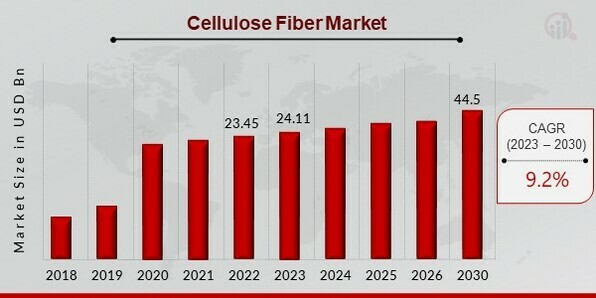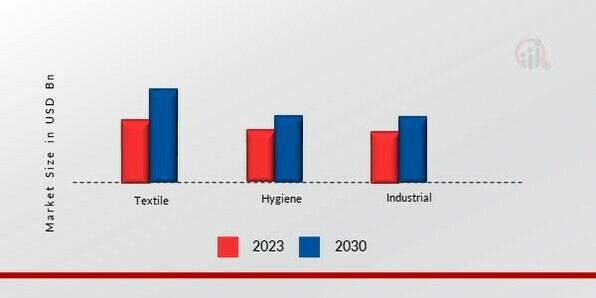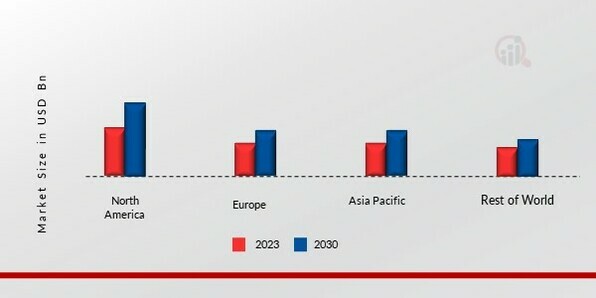

- Global Market Outlook
- In-depth analysis of global and regional trends
- Analyze and identify the major players in the market, their market share, key developments, etc.
- To understand the capability of the major players based on products offered, financials, and strategies.
- Identify disrupting products, companies, and trends.
- To identify opportunities in the market.
- Analyze the key challenges in the market.
- Analyze the regional penetration of players, products, and services in the market.
- Comparison of major players’ financial performance.
- Evaluate strategies adopted by major players.
- Recommendations
- Vigorous research methodologies for specific market.
- Knowledge partners across the globe
- Large network of partner consultants.
- Ever-increasing/ Escalating data base with quarterly monitoring of various markets
- Trusted by fortune 500 companies/startups/ universities/organizations
- Large database of 5000+ markets reports.
- Effective and prompt pre- and post-sales support.
Global Cellulose Fiber Market Overview
The Cellulose Fiber Market Size was valued at USD 23.45 Billion in 2022. The Cellulose Fiber market industry is projected to grow from USD 24.11 Billion in 2023 to USD 44.5 Billion by 2030, exhibiting a compound annual growth rate (CAGR) of 9.2% during the forecast period (2023 - 2030). The demand for cellulose fibers is rising globally, which is likely to fuel the expansion of the cellulose fiber market during the forecast period. Companies are seeking alternatives to petrochemical-sourced fibers and changing towards eco-friendly and biodegradable fibers. Additionally, the demand for cellulose fiber is rising due to the widespread usage of cellulose fibers in the textile and apparel industries, which is likely to fuel the expansion of the cellulose fiber market in the coming years.

Source: Secondary Research, Primary Research, MRFR Database, and Analyst Review
Cellulose Fiber Market Trends
-
Construction industries are expected to drive regional market growth during the review period.
With the expanding worldwide populace, the requirement for interest in the material industry is developing, which is increasing the cellulose fiber market size. Furthermore, as cellulose filaments are skin-accommodating, climate-well-disposed, and biodegradable, the market is probably going to encourage in the coming years. Therefore, critical utilization from the material business attributable to its advantages is expected to fuel the cellulose fiber market development in the coming years.
With the increasing interest for body flexible, natural well disposed, and bio-degradable dress and textures from the material business, a sound development has been distinguished in the worldwide cellulose fiber industry. Additionally, with the rising extra cash levels of the working class populace, the market is considered to prosper. Wood mash being one of the key crude materials utilized in the creation of cellulose strands impacts the market generally. With expanding worldwide temperature alteration the world, the interest in biodegradable cellulose fiber has expanded, further adding to the cellulose fiber market growth development. Additionally, the multiplication of new market participants may upgrade the worldwide cellulose fiber market emphatically.
Additionally, The Competitive Strategic Window investigations are considered effective opportunities for business sectors, applications, and regions. The Competitive Strategic Window assists the seller with characterizing an arrangement or fit between their capacities and openings for future development possibilities for the cellulose fiber market manufacturer. It characterizes the ideal or good fit for the merchants to embrace progressive consolidation and securing methodologies, topography extension, research and improvement, and new item acquaintance techniques to execute further business development during an estimated period.
Cellulose Fiber Market Segment Insights
Cellulose Fiber Product Type Insights
The Cellulose Fiber market segmentation, based on Product type, includes the man-made segment accounted for around 62% of the overall volume share in 2015. These come from plants and their products, which are processed into pulp. Then, they are extruded like other synthetic fibers. Viscose and Rayon are the most common man-made type, which is produced from wood pulp. The synthetic fibers industry is projected to show significant growth owing to its various properties, for instance, strong, thermoplastic, fungi-resistant, abrasion-resistant, low absorbency, inexpensive, and easily available.
Cellulose Fiber Application Insights
Based on Application, the Cellulose Fiber market segmentation includes Textile, Hygiene, and Industrial. Textile was the prominent segment in 2015. The segment alone accounts for around 44% of the revenue share. The major application of fibers in the textile industry is to reinforce composites and filter chemicals. Therefore, fiber produced from wood pulp is becoming an important element in the textile industry.
Cotton is the major raw material for the textile industry. However, declining cotton production owing to the difficulty in its cultivation has resulted in major growth in the demand for wood-based cellulose fibers. These are high-performing and find applications in industrial, home textile, apparel, etc.
Figure 2: Cellulose Fiber Market, by Application, 2023 & 2030 (USD Billion)

Source: Secondary Research, Primary Research, MRFR Database, and Analyst Review
Cellulose Fiber Regional Insights
By region, the study provides market insights into North America, Europe, Asia-Pacific, and the Rest of the World. Asia Pacific was the dominant region and was valued at over USD 7.4 billion in 2015, owing to high demand in the textile and industrial segment. The region is projected to show the same growth trend over the forecasted period due to the rise in demand from industrial, textile, and other application segments in the region.
China, India, Japan, South Korea, Pakistan, Taiwan, and Indonesia are the major markets in the region. These countries are involved in the manufacturing and trade of fibers, which are used across various end-use industries. Vietnam and Bangladesh are the potential future market for the product. However, strict regulations regarding forestry are expected to hamper the growth of the product over the next nine years.
Figure 3: CELLULOSE FIBER MARKET SHARE BY REGION 2023 (%)

Source: Secondary Research, Primary Research, MRFR Database, and Analyst Review
Europe accounted for around 31% of the total revenue share in 2015. Europe and North America are the mature markets for the product and are expected to grow at a relatively stagnant growth from 2016 to 2025.
Cellulose Fiber Key Market Players & Competitive Insights
Major market players are spending a lot of money on R&D to increase their product lines, which will help the Cellulose Fiber market grow even more. Market participants are also taking a range of strategic initiatives to grow their worldwide footprint, with key market developments such as new product launches, contractual agreements, mergers and acquisitions, increased investments, and collaboration with other organizations. Competitors in the Cellulose Fiber industry must offer cost-effective items to expand and survive in an increasingly competitive and rising market environment.
The major market players are investing a lot of money in R&D to expand their product lines, which will spur further market growth for Cellulose Fiber. With significant market development like new product releases, contractual agreements, mergers and acquisitions, increased investments, and collaboration with other organizations, market participants are also undertaking various strategic activities to expand their presence. To grow and thrive in a market climate that is becoming more competitive and growing, competitors in the Cellulose Fiber industry must offer affordable products.
Manufacturing locally to cut operating costs is one of the main business tactics manufacturers use in the Cellulose Fiber industry to benefit customers and expand the market sector. The Low-Profile Additives market has recently given medicine some of the most important advantages. Major Cellulose Fiber market players, include LENZING AG (Austria), China Bambro Textile Co. Ltd (China), Sateri (China), and Shandong Helon Textile Sci. & Tech. Co. Ltd (China) and others, are attempting to increase market demand by funding R&D initiatives.
Lenzing Group is a key manufacturer, technology leader, and innovator in cellulose fibers supplying the textile and nonwoven industry with sustainable raw materials. B2B sales offices and plants serve our customers in major markets such as China, Indonesia, the US, and Europe. Lensing develops state-of-the-art process technologies and fibers to ‘make the world a softer place’: by extracting cellulose fibers from the natural raw material.
Also, Shandong Helon Co., Ltd is principally engaged in the production and distribution of textile products. The Company provides viscose staple fibers, viscose filaments, cotton pulp, canvas, tire cord fabrics, and non-woven fabrics, among others. The Company also involves in the production of magnesium salt and the generation of electric power. It distributes its products in domestic and overseas markets. As of December 31, 2009, the Company obtained approximately 81.7% of its total revenue from viscose fibers.
Key Companies in the Cellulose Fiber market include
- LENZING AG (Austria)
- China Bambro Textile Co. Ltd (China)
-
Sateri (China) - Shandong Helon Textile Sci. & Tech. Co. Ltd (China)
- Kelheim Fibers GmbH (Germany)
- Grasim (India)
- Fulida Group Holding Co. Ltd (China)
- Sappi (South Africa)
- Tangshan Sanyou Group (China)
-
Eastman Chemical Company (US) - CFF GmbH & Co. KG (Germany)
- China Hi-Tech Group Corporation (China)
Cellulose Fiber Industry Developments
In June 2022, in partnership with Birla cellulose, Nanollose debuts a Lee Mathews-designed garment made of Tree-Rree NullarborTM lyocell at the fashion summit.
In May 2022, IoncellOy announced the launch and commercialization of the production of eco-friendly textile fiber technologies.
In March 2022, to establish a long-term business partnership for manufacturing man-made cellulosic fiber, Birla Cellulose and the Swedish developer of textile-to-textile recycling Renewcell signed a Letter of Intent.
Cellulose Fiber Market Segmentation
Cellulose Fiber Product Type Outlook
- Natural
- Synthetic
Cellulose Fiber Application Outlook
- Textile
- Hygiene
- Industrial
Cellulose Fiber Regional Outlook
- North America
- US
- Canada
- Europe
- Germany
- France
- UK
- Italy
- Spain
- Rest of Europe
- Asia-Pacific
- China
- Japan
- India
- Australia
- South Korea
- Australia
- Rest of Asia-Pacific
- Rest of the World
- Middle East
- Africa
- Latin America
Leading companies partner with us for data-driven Insights
Kindly complete the form below to receive a free sample of this Report
Tailored for You
- Dedicated Research on any specifics segment or region.
- Focused Research on specific players in the market.
- Custom Report based only on your requirements.
- Flexibility to add or subtract any chapter in the study.
- Historic data from 2014 and forecasts outlook till 2040.
- Flexibility of providing data/insights in formats (PDF, PPT, Excel).
- Provide cross segmentation in applicable scenario/markets.





















